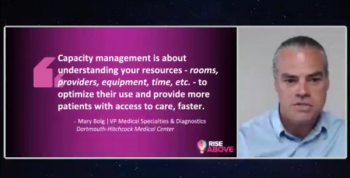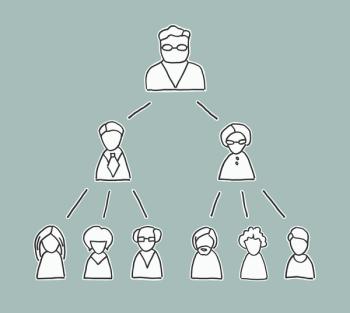
Investing in Tech to Grow Your Practice
Technology has the potential to create a more efficient and robust practice. Here are the technologies to invest in for practice growth.
Thanks to a slew of technological advances, there are more options than ever for practices to consider investment. From clinical IT to operational IT, technology integration can have a profound impact on a practice's efficiency and profitability.
Here's an overview of technology investments that foster practice growth.
Clinical IT
On the clinical side, technology can be invaluable in creating smoother patient interactions and increasing the quality of care. The improved outcomes that come along with clinical IT implementation act as the catalyst for a budding patient panel. Happier, healthier patients are much more likely to refer their friends and family.
Zein Quraishi, chief marketing officer of Elsayyad Medical Group, LLC, a healthcare recruitment and consultancy in Baltimore, Md., recommends investing in a clinical decision support (CDS) tool. "CDS improves healthcare delivery by enhancing the clinical decision-making of physicians," said Quraishi. "Research shows that CDS systems improve morbidity outcomes and have a significant effect on increasing prescriptions for preventative care."
As the use of high-tech wearables and mobile apps increases, physicians should harness this tech to deepen patient engagement. "These new health-centric tools bring important information for diagnosis that goes beyond the four walls of the office," said Jarrett Meiers, Founder of Blueprint Essential, a consulting company located in Ridgefield, Conn.
The continuous stream of data generated from these technologies is instrumental in improving preventative and long-term care, as well as engaging patients on a more consistent basis.
Similarly, iPads and tablets may enhance the patient experience as well. "A connected tablet in the office can provide relevant information related to [a patient's] specific ailment, procedure, or medication," said Meiers. This results in more informed patients, and ultimately, better care - all without increasing face-to-face time with the physician.
Operational IT
As for streamlining operations, incorporating technology solutions that address the most time-consuming tasks is a good place to start.
"Focus on technologies that save time and enhance patient care, without detracting from the overall experience," said Meiers. Since many practices struggle to efficiently handle administrative tasks, like scheduling and payment processing, Meiers suggests investing in practice management software.
"[Software] that integrates well with your existing EHR can instantly pay off by reducing administrative burdens, such as payment collection and automated billing," said Meiers. "A better workflow means physicians get paid faster, and most importantly, spend more time with patients, which translates to more billings."
Offering appointment scheduling via the practice website or an after-hours call forwarding service may further entice prospective patients. "The easier you make it for patients to schedule appointments, the more likely they will schedule at your practice," said Quraishi.
Mapping the technology journey
Ideally, investments in both clinical and operational IT will work in tandem. However, just implementing one small technological change may achieve the desired effect.
Meiers suggests that practices look long-term. "My advice for anyone evaluating new solutions it to keep the entire picture in mind," he said. "I always recommend mapping out the care journey, both from the practice’s and the patient's perspective."
For example, review the patient experience - from scheduling to the first office visit to prescription refills - and identify areas of improvement. Don't hesitate to start with the low-hanging fruit either. "One improvement in a crucial area can pay off mightily," said Meiers.
Growth without technology
For practices who are reluctant to invest in more tech, practice growth is still possible.
"Patients will go to doctors in their locale that have good reputations," said Quraishi. "The fact of the matter is that word-of-mouth builds this reputation. Having a CDS system does not."
Although, a practice known for their cutting-edge technology may be seen more favorably by patients, so writing it off entirely is probably unwise.
"Technology allows a practice to do more with less and is the most powerful partner a small practice can find," said Meiers. "A modern, streamlined practice using technology effectively will automate the mundane, enhance the trivial, and ultimately, increase revenue."
Steph Weber is a freelance writer hailing from the Midwest. She writes about healthcare, finance, and small business, but finds her passion for the medical field growing in sync with the ever-changing healthcare laws.
Newsletter
Optimize your practice with the Physicians Practice newsletter, offering management pearls, leadership tips, and business strategies tailored for practice administrators and physicians of any specialty.








